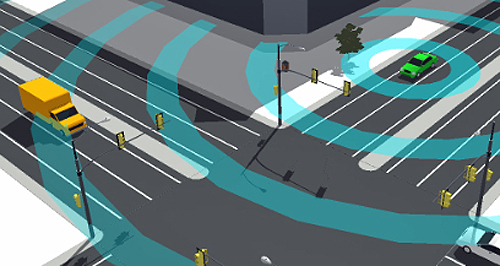News - General News - TechnologySmart roads key to economic successTesting times: Right now in Australia, there are 15 different trials that are focused on connected and automated vehicles on the go. Government reaffirms support for connected vehicles and infrastructure development31 Aug 2017 By IAN PORTER THE federal minister for infrastructure and transport, Darren Chester, says he believes Australia’s future economic success will depend on how well the government handles the various issues around the increased implementation of intelligent transport systems (ITS). The minister was speaking after the second annual roundtable meeting with ITS Australia (ITSA), the non-profit organisation formed to promote the adoption of advanced transport systems that will improve road safety and boost the efficiency of the nation’s multi-billion dollar road network. Minister Chester said the government had already set out a policy framework for a national approach regarding the transport technologies that comprise intelligent transport systems (ITS). “Our future success will depend upon the extent to which we make sound policy, regulatory and investment decisions in response to emerging challenges,” he said. “The Australian Government continues to partner with governments at all levels and industry to deliver innovative test and trial deployments.” There are currently 15 different trials focused on connected and automated vehicles being conducted or scheduled around the country. These cover a wide range, including driverless vehicle trials in every state and territory, truck platooning in Western Australia, the Multi-Modal Test Bed trial in Melbourne and, most recently, a vehicle-to-pedestrian trial in Adelaide conducted by Cohda Wireless. ITSA president Brian Negus said Australia was a world leader in various aspects of ITS, and added that the government was playing a key leadership role in fostering interest and expertise in ITS. “While industry will continue to explore new technologies, and challenge, disrupt and transform the boundaries, it is important government plays a leadership role by supporting new opportunities,” Mr Negus said. “This includes providing timely regulatory changes in collaboration with the ITS industry and research institutions.” In March the government awarded $55 million for the funding of the iMove co-operative research centre, which will develop ITS technologies and solutions. The industry participants in iMove will provide a further $178 million in cash and kind over the 10-year grant period. ITSA chief executive Susan Harris said the number of trials currently being conducted or prepared was a reflection of the strength of the collaboration between the government, the industry and researchers. She said ITSA was well connected with the international ITS community and was aware that Australian regulatory and legislative discussions were watched closely. “We look forward to working with the minister, the federal government and ITS Australia Gold member, the department of infrastructure and regional development, to continue to ensure Australia leads discussions with international trading partners, in particular in Asia Pacific, Europe and America.” Meanwhile, in Queensland, the Central Queensland University has proposed a radical new approach to monitoring the condition and safety of Queensland’s roads. The University, in collaboration with the Australian Road Research Board and the Queensland department of transport and main roads (DTMR), wants to apply image pattern recognition software to the analysis of the state’s roads. The project would use the videos of every state road that are collected each year by the DTMR, plus the mobile laser scanning data that is collected periodically. The chief investigator on the project, Professor Brijesh Verma, said much of the data now held was inaccurate, while there was also a time lag as the data was processed manually. “Automation of the extraction of road attributes from vehicle-mounted video using advanced image analysis, and cross-validation with other data sources such as mobile laser scanning, has the potential to provide a range of value-added products consistently and inexpensively,” he said. These included checking whether roads were cracking or rutted, whether they complied with required safety regulations, detection of fire hazard and vegetation encroachment and the checking of clearances. “The aim of this project is to develop and evaluate deep learning neural network based methods for extracting road attributes.”  Read more30th of June 2016  Driverless cars lead to MelbourneLatest global autonomous vehicle technologies set to break cover in Australia29th of June 2016  Driverless vehicle data is Here and nowVehicles that 'see around corners' closer as driverless data language gets tick |
Click to shareGeneral News articlesResearch General News Motor industry news |
















Facebook Twitter Instagram